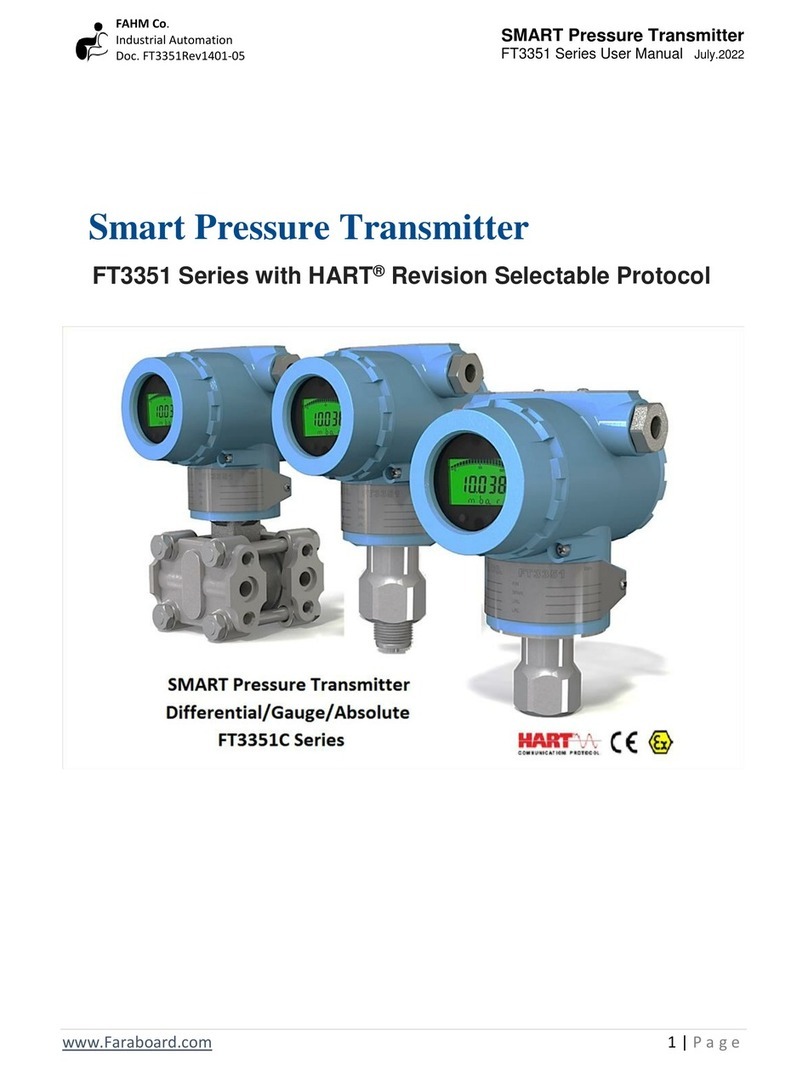
SMART Temperature Transmitter
PTT74-Ex Series User Manual Sep.2020
2
www.faraboard .com
Industrial Automation
Contents
Smart Temperature Transmitter................................................................................................1
1. Introduction .......................................................................................................................3
1.1 Preface.........................................................................................................................3
1.2 Transmitter overview..................................................................................................3
1.3 PTT74-Ex features .......................................................................................................4
2. General considerations......................................................................................................4
2.1 Environmental considerations ....................................................................................5
2.2 Installation Process .....................................................................................................5
2.2.1 Dimension ............................................................................................................5
2.2.2 Mount the Transmitter ........................................................................................6
2.2.3 Housing rotation ..................................................................................................6
2.3 Electrical considerations .............................................................................................7
2.3.1 Conduit installation..............................................................................................7
2.3.2 Wiring Instruction ................................................................................................7
2.3.3 Grounding ..........................................................................................................10
3. Configuration ...................................................................................................................11
3.1 LCD display ................................................................................................................11
3.2 Device setup..............................................................................................................11
3.2.1 Primary Variable ................................................................................................12
3.2.2 Custom Variable.................................................................................................15
3.2.3 LCD Parameters..................................................................................................16
3.2.4 Analog Output Parameters ................................................................................17
3.2.5 Communication Parameters..............................................................................17
3.2.6 Reset Factory .....................................................................................................18
3.2.7 Sensor Configuration .........................................................................................18
Appendix A...............................................................................................................................24
Assembly Drawing - PTT74-EX-H .........................................................................................24
Accessories / Spare parts.........................................................................................................25




























